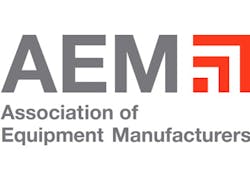WHAT EQUIPMENT MANUFACTURERS NEED TO KNOW ABOUT BIDEN’S RECENT “BUY AMERICAN” EXECUTIVE ORDER
Last week, President Biden issued an executive order to review and revise two federal procurement laws referred to as “Buy America” or “Buy American” laws. While equipment manufacturers should understand what these laws require, the administration has not yet indicated whether they seek to expand the scope of products subjected to new and existing federal procurement laws. For example, equipment used by a contractor on federally funded Department of Transportation projects are not currently subjected to these laws.
The Buy America Act requires 100% of the “iron, steel, and manufactured products used in the project” on federally funded Department of Transportation projects be produced in the United States. Rolling stock like buses and rail cars have separate domestic component thresholds and require domestic assembly. The second law, the Buy American Act, applies to all federal government agency purchases of goods with a value that exceeds the micro-purchase threshold (generally $3,500). In instances when domestic materials cannot be procured in sufficient quality or quantity, the price differential is too high, or domestic procurement is not in the public interest (typically in adherence to free trade agreements), the government can issue a waiver to these laws.
Over the coming year, the administration stated it intends to change how the federal government awards preferences to these existing laws, as well as consider new laws related to federal procurement, federal grants and other forms of federal assistance.
The executive order specifically:
- Directs agencies to close potential loopholes in how domestic content is measured and increase domestic content requirements;
- Appoints a new senior leader in the Executive Office of the President in charge of the government’s Made-in-America policy approach;
- Increases oversight of potential waivers to domestic preference laws;
- Connects new businesses to contracting opportunities by requiring active use of supplier scouting by agencies;
- Reiterates the President’s strong support for the Jones Act; and
- Directs a cross-agency review of all domestic preferences
In the coming months, a Made in America Director will be appointed to the Executive Office of the President. This person will be tasked with directing agency heads to review existing procurement programs, issuing guidance on new Buy America and Buy American waivers, and creating a website for the public to track these federal waiver requests.
Furthermore, within 180 days of the date of this order, the Federal Acquisition Regulatory Council (FAR Council) will consider proposing for notice and public comment amendments to the applicable provisions in the Federal Acquisition Regulation (FAR), title 48, Code of Federal Regulations, that would:
- Replace the “component test” in Part 25 of the FAR that is used to identify domestic end products and domestic construction materials with a test under which domestic content is measured by the value that is added to the product through U.S.-based production or U.S. job-supporting economic activity;
- Increase the numerical threshold for domestic content requirements for end products and construction materials; and
- Increase the price preferences for domestic end products and domestic construction materials.
Throughout this period, AEM will be engaging both industry and federal government stakeholders on these proposed changes and submitting public comments. AEM will work to determine whether proposed changes could impact defense procurement, government export financing, and the WTO’s Government Procurement Agreement. We will be providing our members with additional updates as updates become available.
Megan Evans is AEM's Government Relations Manager
If AEM members want to know more information, or want to provide feedback, email me at [email protected].
Subscribe to the AEM Industry Advisor for more perspectives from AEM staff.








